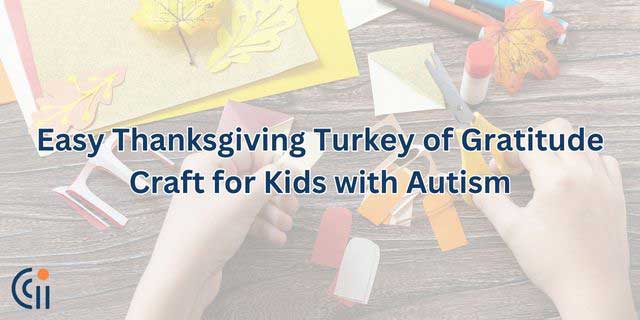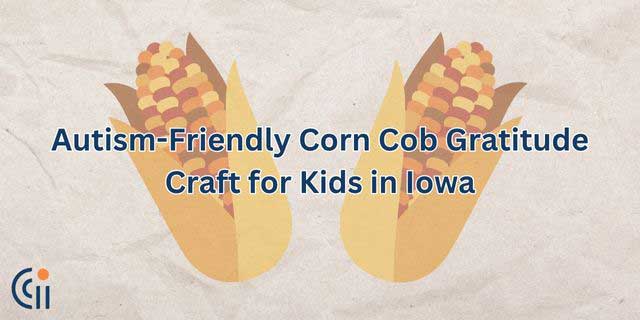Valentine’s Day is an excellent opportunity to celebrate love and creativity with your little ones, but traditional crafts can sometimes be overwhelming for children with sensory sensitivities. Sensory-friendly crafts are a fantastic way to engage your child while providing a calming and enjoyable experience. At Circle City ABA, we believe in supporting families with fun, inclusive activities that help children thrive. Below, we’ve compiled a list of sensory-friendly Valentine’s Day crafts that are easy to make, encourage creativity, and provide sensory benefits.
1. Textured Heart Collages
Use materials like felt, foam, fabric scraps, and cotton balls to create heart-shaped collages.
- Why it’s sensory-friendly: Encourages tactile exploration with soft, smooth, and textured materials.
- What you’ll need: Cardboard hearts, glue sticks, and textured craft supplies.
2. Fingerprint Heart Art
Create heart shapes or patterns by dipping your fingers in washable, non-toxic paints.
- Why it’s sensory-friendly: It provides a gentle sensory experience while allowing creativity.
- Pro tip: Use paint in calming colors like pastels if bright colors are overstimulating.
3. Sensory Love Jars
To create Valentine-themed sensory bottles, fill clear plastic jars with red and pink glitter, sequins, water, and baby oil.
- Why it’s sensory-friendly: Calming visual stimulation as kids shake the jars and watch the glitter settle.
- What you’ll need: Plastic jars, glitter, food coloring, and liquid glue.
4. Playdough Heart Creations
Make hearts and other shapes using Valentine-themed playdough cutters. You can also make your own scented playdough using lavender or vanilla.
- Why it’s sensory-friendly: Squishing and rolling playdough is calming and strengthens fine motor skills.
- What you’ll need: Playdough, rolling pins, and heart-shaped cookie cutters.
5. Puffy Paint Valentine Cards
Mix shaving cream with glue and red or pink food coloring to make puffy paint. Kids can create unique Valentine’s cards by spreading the paint over heart shapes.
- Why it’s sensory-friendly: It offers a soft, foamy texture that’s fun to spread and squish.
- What you’ll need: Shaving cream, glue, food coloring, and cardstock.
6. Ribbon or Bead Heart Garlands
String large beads or tie ribbons onto a yarn string to create a garland of hearts.
- Why it’s sensory-friendly: Engages fine motor skills and gives a repetitive, soothing activity.
- What you’ll need: Yarn, beads, ribbon, and pre-cut heart shapes.
7. Tissue Paper Heart Suncatchers
Attach small squares of colorful tissue paper to a heart-shaped piece of clear contact paper. Then, hang the pieces on the windows for a colorful, light-catching effect.
- Why it’s sensory-friendly: The soft texture of tissue paper and the visual appeal of light shining through make this activity both calming and beautiful.
- What you’ll need: Contact paper, tissue paper, scissors, and tape.
8. Lavender-Scented Heart Pillows
Make small, no-sew heart pillows using felt. Stuff them with cotton and dried lavender. Let kids help fill and decorate them.
- Why it’s sensory-friendly: Combines a calming scent with soft textures.
- What you’ll need: Felt, cotton stuffing, dried lavender, and fabric glue.
9. Valentine’s Sensory Bin
Fill a bin with pink and red rice, heart-shaped erasers, pom-poms, and small toys for kids to explore. For added fun, add scoops and spoons.
- Why it’s sensory-friendly: Provides tactile and visual sensory input while encouraging imaginative play.
- What you’ll need: A large bin, colored rice, and Valentine-themed trinkets.
10. Calm Down Glitter Hearts
Use foam hearts as the base and let kids decorate them with glitter glue in swirling patterns. The activity itself is calming, and the glittery hearts can be used as a soothing visual tool.
- Why it’s sensory-friendly: Promotes focus and relaxation through repetitive, slow movements.
- What you’ll need: Foam hearts, glitter glue, and markers.
About Circle City ABA
Circle City ABA passionately nurtures progress through play with ABA therapy. We develop programs and services specifically designed for each child. Our child-centered, compassionate approach to therapy brings family goals and clinical best practices in tandem to help kids learn and grow. We’ll work together to define success and help your child achieve it. Contact our admissions team for more information on our services and how we can support you and your child. Find a location near you! We serve Arizona, Georgia, Indiana, Iowa, and Nebraska.
Enjoy Crafting this Valentine’s Day
Valentine’s Day crafts can be a delightful way to spark creativity and connection while also catering to your child’s unique sensory needs. These crafts are designed to make the holiday fun, relaxing, and engaging for the whole family. At Circle City ABA, we’re here to support your child’s growth through play-based, individualized ABA therapy. If you’d like to learn more about how we can help your child develop essential skills, don’t hesitate to contact us today! Let’s make every day memorable, one step at a time.


